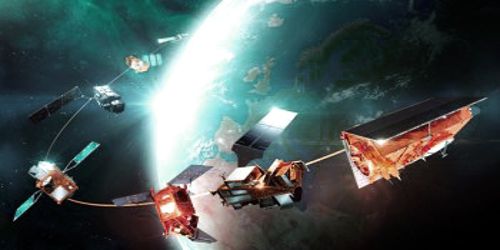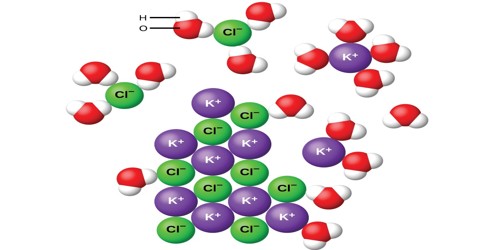The stationkeeping subsystem is necessary to maintain the desired orbit. In astrodynamics, orbital station-keeping is keeping a spacecraft at a fixed distance from another spacecraft. Various forces (primarily due to the Moon, Sun, the Earth’s oblateness, aerodynamic, gravitational, and magnetic forces) would alter the orbit over time, degrading the mission effectiveness. It requires a series of orbital maneuvers made with thruster burns to keep the active craft in the same orbit as its target. It is the deviation of Earth’s gravity field from that of a homogeneous sphere and gravitational forces from Sun/Moon will in general perturb the orbital plane.
The orbit control process required to maintain a stationary orbit is called station-keeping. Orbital station-keeping is keeping a spacecraft at a fixed distance from another spacecraft.
Station-keeping is necessary to offset the effect of perturbations, principally due to the Earth’s triaxiality and lunar and solar attractions, which tend to process the orbit normal and alter the orbital energy. For many low Earth orbit satellites, the effects of non-Keplerian forces, i.e. the deviations of the gravitational force of the Earth from that of a homogeneous sphere, gravitational forces from Sun/Moon, solar radiation pressure, and air drag, must be counteracted. For a spacecraft in a very low orbit, the atmospheric drag is sufficiently strong to cause a re-entry before the intended end of the mission if orbit raising maneuvers are not executed from time to time.

The deviation of Earth’s gravity field from that of a homogeneous sphere and gravitational forces from the Sun and Moon will in general perturb the orbital plane. Due to the need for infrequent but relatively powerful thrusting maneuvers exerted at a single point on the satellite (the center of mass), a chemical rocket was chosen for stationkeeping maneuvers. For a sun-synchronous orbit, the precession of the orbital plane caused by the oblateness of the Earth is a desirable feature that is part of mission design but the inclination change caused by the gravitational forces of the Sun and Moon is undesirable. The stationkeeping analysis was performed to account for an average and worst-case scenario, given a circular 600 km altitude orbit.
The different scenarios derive from the fact that the atmospheric density and therefore aerodynamic forces on the satellite fluctuate drastically based on solar activity. For geostationary spacecraft, the inclination change caused by the gravitational forces of the Sun and Moon must be counteracted by a rather large expense of fuel, as the inclination should be kept sufficiently small for the spacecraft to be tracked by non-steerable antennae. For a spacecraft in a very low orbit, the atmospheric drag is sufficiently strong to cause a re-entry before the intended end of the mission if orbit raising maneuvers are not executed from time to time.
Orbits around libration points are dynamically unstable, meaning small departures from equilibrium grow exponentially over time. For spacecraft in a low orbit, the effects of atmospheric drag must often be compensated for, oftentimes to avoid re-entry; for missions requiring the orbit to be accurately synchronized with the earth’s rotation, this is necessary to prevent a shortening of the orbital period. As a result, spacecraft in libration point orbits must use propulsion systems to perform orbital station-keeping.
Information Source:
















